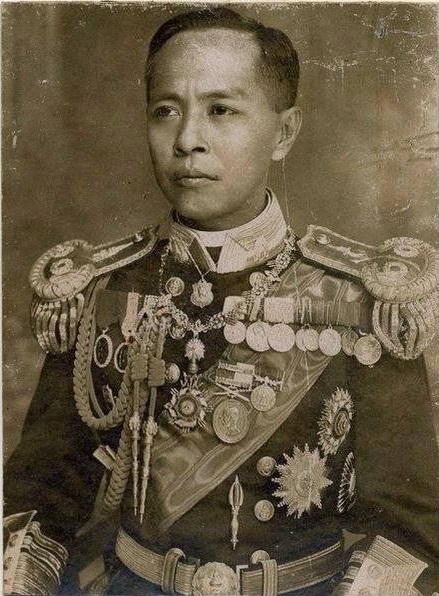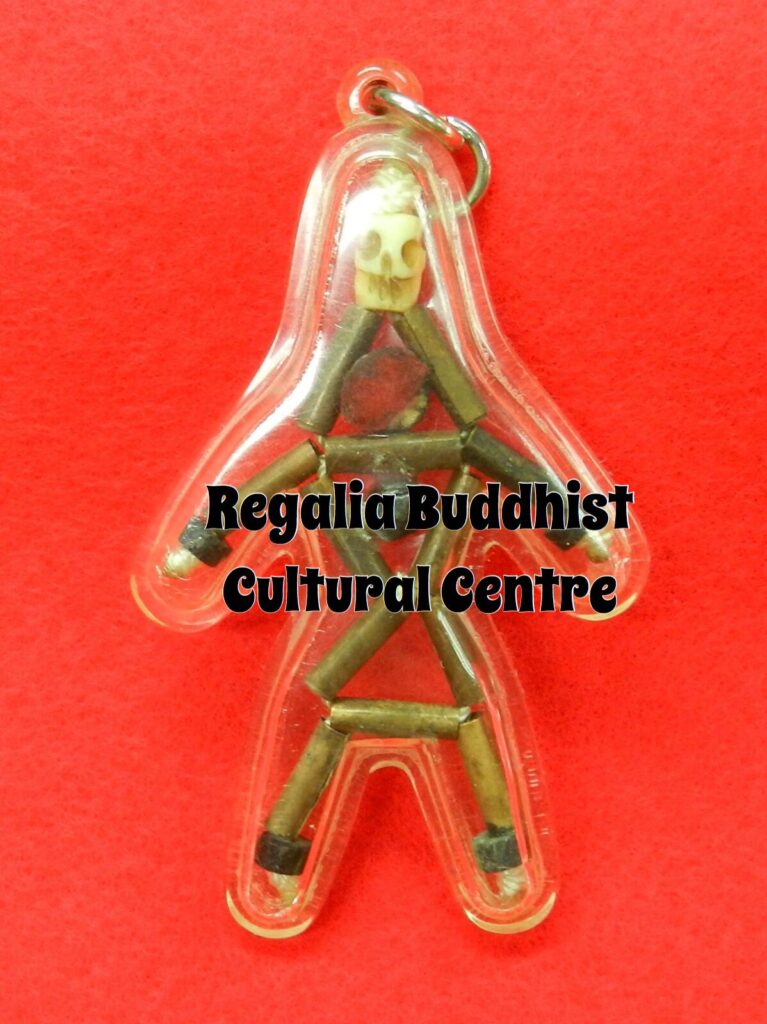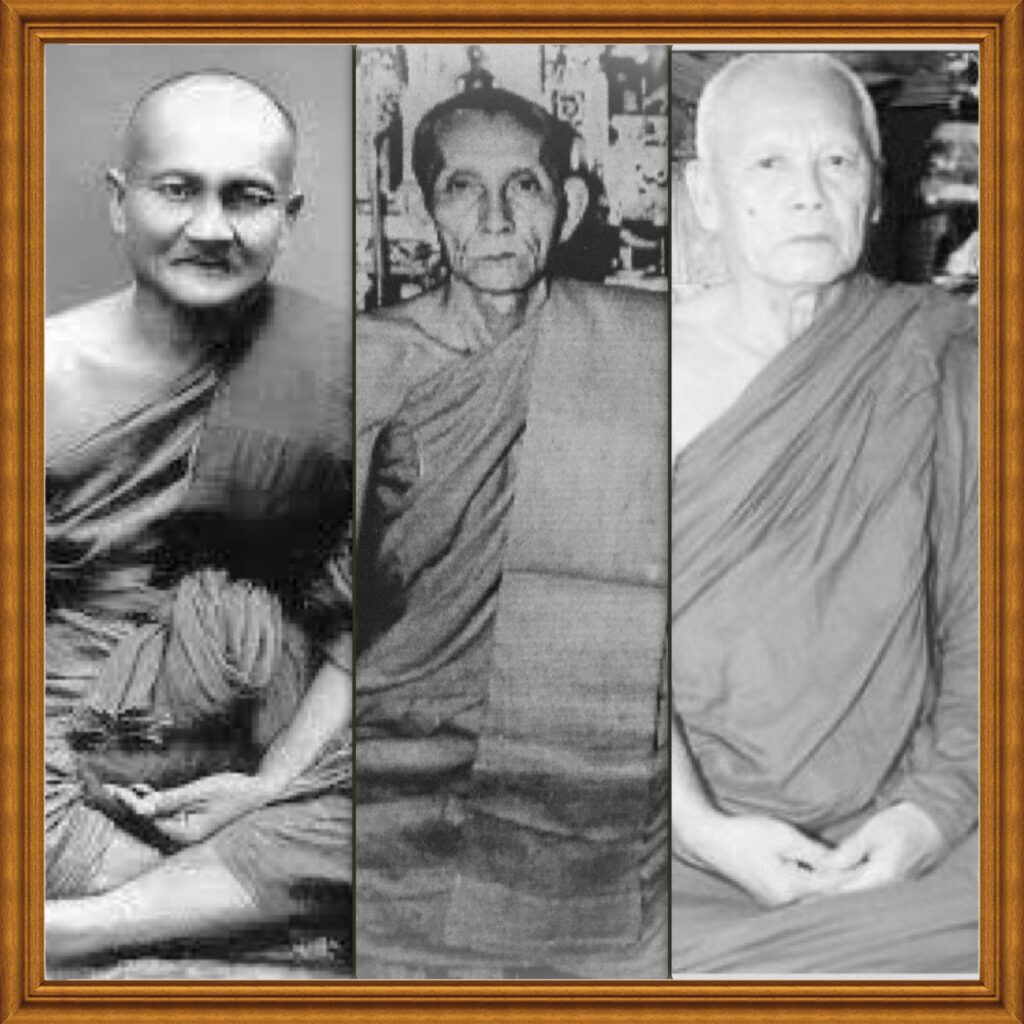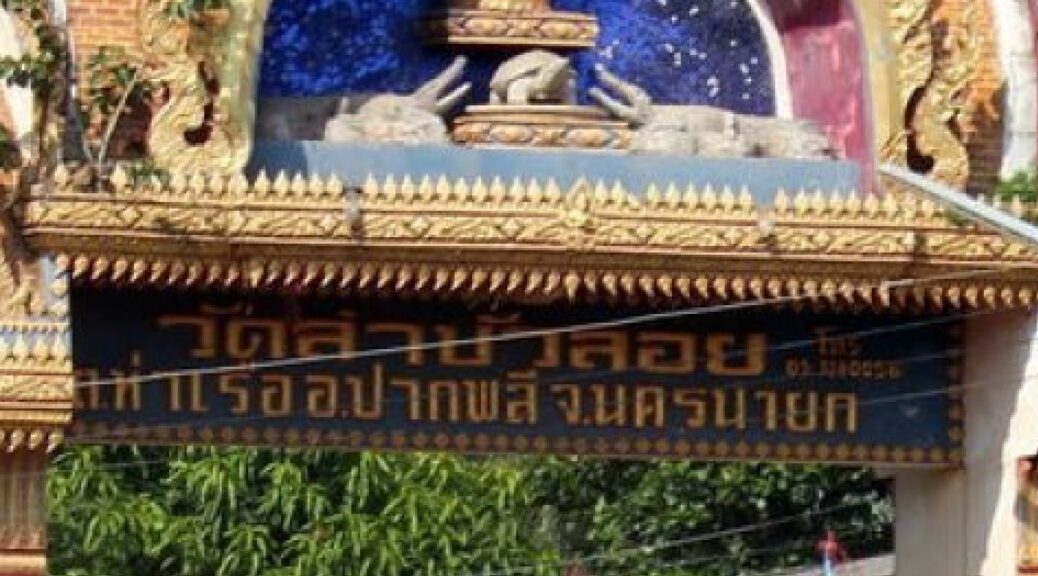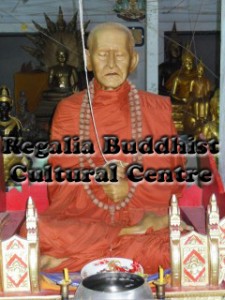When we talk about northern Thailand or the Lanna regions, we refer to regions including Kamphaeng Phet, Nakhon Sawan, Nan, Phayao, Phichit, Phitsanulok, Lampang, Lamphun, Sukhothai, Uttaradit, Uthai Thani, Chiang Rai, Chiang Mai, Phetchabun, and Mae Hong Son. Most of these regions are characterized by mountains, valleys and basins between mountains. There is a steep slope from the northwest that gradually slopes down to the low plains in the south-eastern and central regions before it slowly rises back in the east and northeast in the Nan Province, namely the Luang Prabang Mountain Range. These highlands are the source of many rivers and streams that flows into the Mekong River in the north and into the Chao Phraya River in the south as well as the Salween River in the west. It is an ideal fertile area for farming and settlement making it a source of important communities in the region.

Susira Anjeleena Nannan or Maree in Buppesanniwat (Love Destiny) is one of the top Chiangmai beauties.
Northern Thailand is a region of diverse traditions and cultures that are no less interesting than other regions of Thailand. It is known as a region full of magical charm with Chiangmai being the heart of Lanna and the centre of tourist attraction. Tourists are impressed with the many attractions and the generous spirit of the northerners. Apart from being a centre for arts, antiques, and traditional Lanna culture, Chiangmai is also a province that produces many Thai beauties and celebrities including Susira Anjeleena Nannan, Oranate D. Caballes, Natthanicha Dangwattanawanich, Pijakkana Wongsaratanasilp, and et cetera. Nonetheless, the actual spirit of northern Thais remains rooted in Lanna Buddhism.
Buddhism in Lanna Land

Wat Phra That Doi Suthep is one of the moset sacred Thai Buddhism temples in Chiangmai
Prior to Theravada Buddhism, the people of Chiang Mai and those living in Lanna regions embraced Sasana Phi which was subsequently integrated with Buddhism giving rise to the various unique rituals and ceremonies hitherto. Theravada Buddhism is also the primary source that integrated the people of northern Thailand. The most unique feature is perhaps “Tung” that is likened to “flags” in the central region but has a meaning in Buddhism reflecting beliefs and faith as well as a cause to create unity among human beings. Theravada Buddhism continued to florished throughout the Lanna region with two eminent temples built under the grace of Phaya Kue Na to house the relics of Lord Buddha, namely, Wat Suan Dok and Wat Phra That Doi Suthep Ratchaworawihan.
Unfortunately, the Lanna regions fell into the hands of the Burmese in 1558 (B.E 2101), beginning what is called the 200 years of “Dark Age” in northern Thailand. Buddhism took a deep plunge during that era. There was a lack of monks who have qualifications, there were no Buddhist philosophers, and there were no religious texts or literature as there used to be in the past. Not until late 1760s and early 1770s that light began to shine through the kingdom once again with the rise of King Taksin the Great who successfully ended Burmese incursions in toto. The 15-year reign of King Taksin the Great was marked by a series of wars. After the establishment of Thonburi as the new Thai capital, the Burmese repeatedly tried to invade the kingdom. A total of nine major battles were fought during that period. The Burmese were defeated at Bang Kung, Samut Sakhon Province; Sawangkhalok; Phichai; and at Bang Kaew, Ratchaburi. Further battles were fought in the northern provinces to free Lanna Thai. The greatest battle of all took place in Chiangmai where the Burmese hold over the city was especially strong. The last Burmese attack on Chiangmai took place in 1776 (B.E. 2319) but they were thoroughly defeated by the Thai army. For more information, please refer to our earlier article “Understanding Thai Buddhism.”
Saint of Lanna

Kruba Srivichai the Saint of Lanna who is today revered throughout the kingdom.
When Chiang Mai came under the rule of Bangkok, Buddhism in Chiangmai which used to be the centre of Lanna Buddhism has, therefore, been modified according to the practices originating from Bangkok. Regulations are all set centrally and which were deemed detrimental to the belief, custom, and cultural values of the Lanna people, especially the hill tribes.
During this time, Kruba Sriwichai, a hero within the clergy was born. He was a monk who respected both the faiths of the townspeople and hill tribes and he was the monk who revitalized Lanna Buddhism especially in Chiangmai. His Venerable was also responsible for the reformation and restoration of various temples in Chiangmai and nearby provinces until he received the title Saint of Lanna. His Venerable’s struggle to restore Lanna Buddhism gained strong support from the Lanna community as well as the northern clergy with more than 90 temples breaking rank with the Thai Sangha to join Kruba Srivichai. His Venerable’s influence was both eminent and prominent among the Lanna communities so-much-so that he was perceived as a threat by both the Thai Sangha and the Thai state leading to His Venerable’s second detention at Wat Benchamabophit in 1935 (B.E. 2478).

Kruba Srivichai Phim Sawng Chai 2482 medal has a current open market value of ฿500,000 to ฿1,000,000 depending on condition of the amulet.
His Venerable’s detention caused loud public disquiet that Luang Sri Praklak, the member of the House of Representatives for Chiangmai at that time, ultimately demanded the release of Kruba Srivichai at the Cabinet meeting. The political intervention caught the eyes of the general public and His Venerable was finally released in 1936 (B.E. 2479).
The Immortal Speech
After being released, His Venerable said “if the Ping River doesn’t flow back north will not ask to step on the land of Chiang Mai.”
Kruba Srivichai thus returned to Wat Ban Pang, Li District, Lamphun Province where His Venerable entered parinibbāna on February 21, 1938 (B,E. 2481). His relics were divided into 7 parts and enshrined in 7 different locations throughout Lanna as follows:
1. Wat Chamadewi, Lamphun Province
2. Wat Suan Dok, Chiang Mai Province
3. Wat Phra Kaeo Don Tao, Lampang Province
4. Wat Sri Khom Kham, Phayao Province
5. Wat Phra That Cho Hae, Phrae Province
6. Wat Nam Hoo, Mae Hong Son Province
7. Wat Ban Pang, Li District, Lamphun Province

The Kruba Srivichai Monument was built in reverence of the Saint of Lanna.
A statue of Kruba Sriwichai moulded and casted in Bangkok was delivered upon the completion of the Kruba Srivichai Monument at the foot of the mountain on the way up to Wat Phra That Doi Suthep. However, it was said that the statue just somehow cannot be taken out from the car and has to be sent back to Bangkok. The people believe it was due to the mystical immortality of His Venerable’s speech aforementioned. Consequently, the construction of the Bhumibol Dam in Tak Province caused water to flood up to the north in 1964 (B.E. 2507) and Kruba Srivichai’s image was then successfully invited and enshrined at the foot of Wat Phra That Doi Suthep.
The Last of Kruba Srivichai’s Disciples

Kruba Duangdee, the last of Kruba Srivichai’s disciples, was one of the top Lanna Thai guru monk.
Besides Kruba Srivichai, there are also several other northern Thai monks such as Luang Pu Waen and Luang Phor Kasaem who achieved nationwide reverence. However, the most celebrated figure in in recent Lanna history was Phra Mongkolwisut or Kruba Chao Duangdee Suphatto, the former abbot of Wat Tha Champi, one of the top guru monks in Chiangmai who is known as the last generation of Kruba Srivichai’s disciples.

Medallion of Kruba Duangdee made and consecrated in Buddhist year 2508.
Kruba Duangdee Suphatto was born on April 26, 2449 in Ban Tha Champi, Thung Satok Subdistrict, San Pa Tong District, Chiang Mai Province during the reign of His Majesty King Chulalongkorn, King Rama V, corresponding to the reign of Por Chao Inthawichayanon (Chao Maha Chiva) Ruler of Chiang Mai. He was a native of Tha Champi village from birth. His parents were farmers. His father’s name was Por Oob and his mother’s was Mae Chan. Kruba Duangdee had 8 siblings from the same parents, 4 males, 4 females and His Venerable was the 7th child in the family.

Medallion of Kruba Duangdee made and consecrated in Buddhist year 2518.
At the age of 13, Kruba Duangdee was brought before Kruba Sriwichai who, at that time, had come to restore the city of Chiangmai in 2462. Kruba Srivichai was pleased and he told Kruba Duangdee that “If you are ordained a monk, then you come up and stay at Wat Phra Singh and will be friend with Sing Dam” (the biological grandson of Kruba Sriwichai). Kruba Duangdee was subsequently ordained. He studied and practiced under the instruction of Kruba Srivichai until he was 32 years old. Then His Venerable followed the footsteps of Kruba Srivichai and travelled extensively to build temples in the northern regions before returning to construct Wat Tha Champi.

Medallion of Kruba Duangdee made and consecrated in Buddhist year 2536.
At the age of 42, Kruba Duangdee received the title of Chao Awat of Thung Satok Subdistrict. However, even he was burdened by duties of the Sangha His Venerable did not neglect the observance of Vipassana meditation and practices of ancient Lanna wetmon. Besides the building and expansion of Wat Tha Champi, His Venerable also became the main force in the construction and restoration of almost every temple in the region as well as other philanthropic projects be it roads, ubosot, viharn, chedi, bridges, or even schools and hospitals. Therefore, His Venerable had utilise the ancient Lanna wetmon he learned from Kruba Srivichai to make and consecrate various sacred objects to raise funds for these activities.

Kumanthong Thep Phanom 2517 was made from108 types of powder, mixed with gold leaves.
Sacred objects made and consecrated by His Venerable are highly priced but, nonetheless, are well received by followers, believers, and collectors. Among the many sacred objects highly sought after is Kumarnthong Thep Phanom (Loon Lek) made and consecrated in Buddhist year 2517. Kumanthong Thep Phanom was made from108 types of powder mixed with gold leaves and consecrated through the invocation of ancient Lanna Thai rituals of Samanayakaya where the gloomy Rasri become bright with merit. Kumanthong Thep Phanom, as an angel, will perform the prestige by helping believers in various positive aspects. Unfortunately, owing to high effectiveness and demand, Kumarnthong Thep Phanom becomes one of the most imitated Kumanthong images after those made and consecrated by Luang Phor Teh.
Watthuk Mongkhun loon Sudthai Phra Mongkhon Wisut
His Venerable continued his virtuous endeavours right up to his final days. In Buddhist year 2551, His Venerable made and consecrated the last batch of sacred objects (Watthuk Mongkhun loon Sudthai Phra Mongkhon Wisut) to raise funds for Wat Choeng Wai, Pak Than Subdistrict, Bang Rachan District, Singburi Province for the construction of the Buddha Trai Rattanakosin (Luang Por To) image measuring lap width 20 meters and height 43 meters costing 20 million baht whilst the overall project inclusive of pillars, archways and et cetera amounted to another 5 million baht. The direct temple rental prices for Watthuk Mongkhun loon Sudthai Phra Mongkhon Wisut begins from 5,000 baht to 1 million baht. Some of these sacred objects are still available at Wat Tha Champi at old prices.
After serving the Sangha for 83 years, Kruba Duangdee entered parinibbāna at the age 104 years old on February 6, 2553. The former abbot of Wat Tha Champi, San Pa Tong District, Chiang Mai Province, was the longest-lived famous monk in Lanna Thai. The passing of His Venerable has caused rental prices for sacred objects made and consecrated by His Venerable skyrocketing. At the same time, it has also led to counterfeit products flooding the market.






































